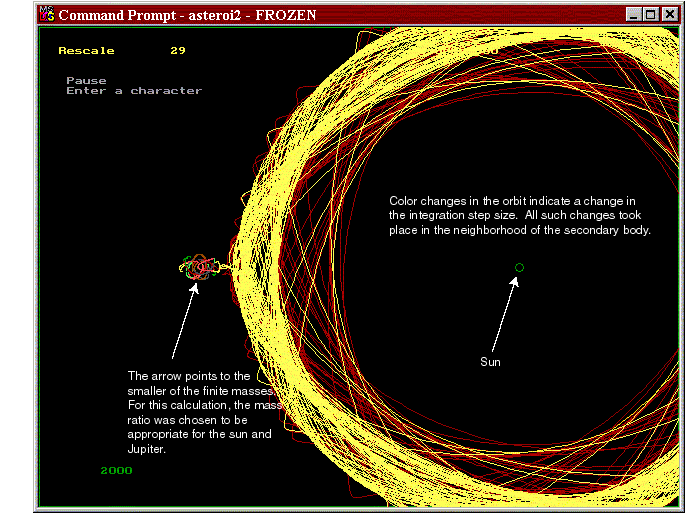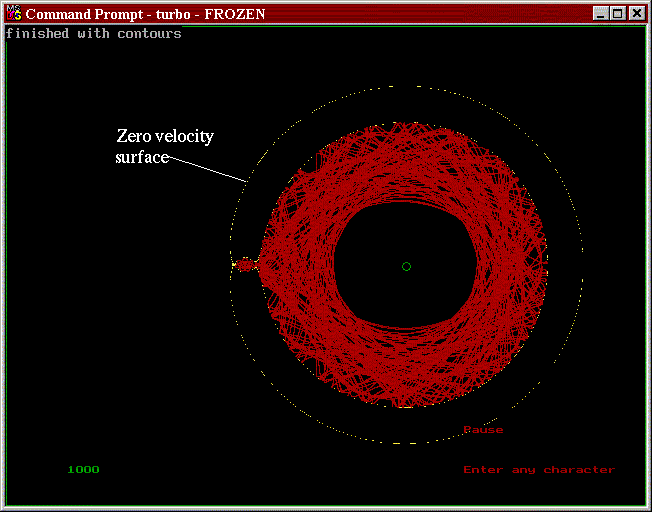 periods of the finite masses.
The integration step has been changed 29 times.
In this interval, the infinitesimal body has been captured and
escaped several times.
periods of the finite masses.
The integration step has been changed 29 times.
In this interval, the infinitesimal body has been captured and
escaped several times.
When we discuss the origin of the Moon in our elementary classes, we often say it is very unlikely the moon was captured by the Earth, because two-body caputure is impossible. Any such capture would have required some mechanism for the Moon to lose energy, to keep it from flying back to "infinity" again. Most of the mechanisms that have been thought of are improbable.
In fact, if the Moon had been captured by the Earth,
it wouldn't have been two-body capture. The Earth, Sun, and
Moon are a well-known three-body problem. If we neglect the
Moon's relatively small mass, we have the classical
restricted three-body problem. The figure below
illustrates the orbit of an infinitesimal mass in a restricted
three-body calculation. In this case, the mass ratio is
appropriate to the Sun and Jupiter. The two-dimensional
calculation is set up so that whenever the variables are
changing rapidly, the integration step is automatically
shortened, and color of the trajectory changes. In the figure
below, the code has been run for 2000 time units, or
2000/2 periods of the finite masses.
The integration step has been changed 29 times.
In this interval, the infinitesimal body has been captured and
escaped several times.
periods of the finite masses.
The integration step has been changed 29 times.
In this interval, the infinitesimal body has been captured and
escaped several times.

Some insight may be gained from looking at the following illustration, in which the intersections of the zero velocity surfaces with the xy-plane are shown in yellow. In this These curves are like a long sausage that is wrapped around the larger mass, and meets at the secondary mass. There is a little area left open around the inner Lagrangian point. Every so often, the infinitesimal mass will "pop" through the opening and into this area. In all of the calculations I have done, the infinitesimal mass will orbit the smaller mass for a time, and then break out again. If it were to be permanently captured, it would, like the Moon in various scenarios, have to lose energy. This could be by sweeping up of existing satellites.

It might also be that after formation of the secondary body, many smaller bodies were captured through this opening in the sausage ring. Then they could bump into one another, and lose energy, and finally sweep up enough mass to form a satellite.
This doesn't mean we have to give up the favored Big Whack hypothesis for the origin of the Moon. Without doubt, this "restricted three-body capture" has been well known and investigated by specialists in the dynamics of the solar system. We teachers do have to be a little careful when we discuss our rationale for abandoning the capture hypothesis. It seems likely that a number of the satellites within the solar system have in fact been captured by a mechanism rather like this one.